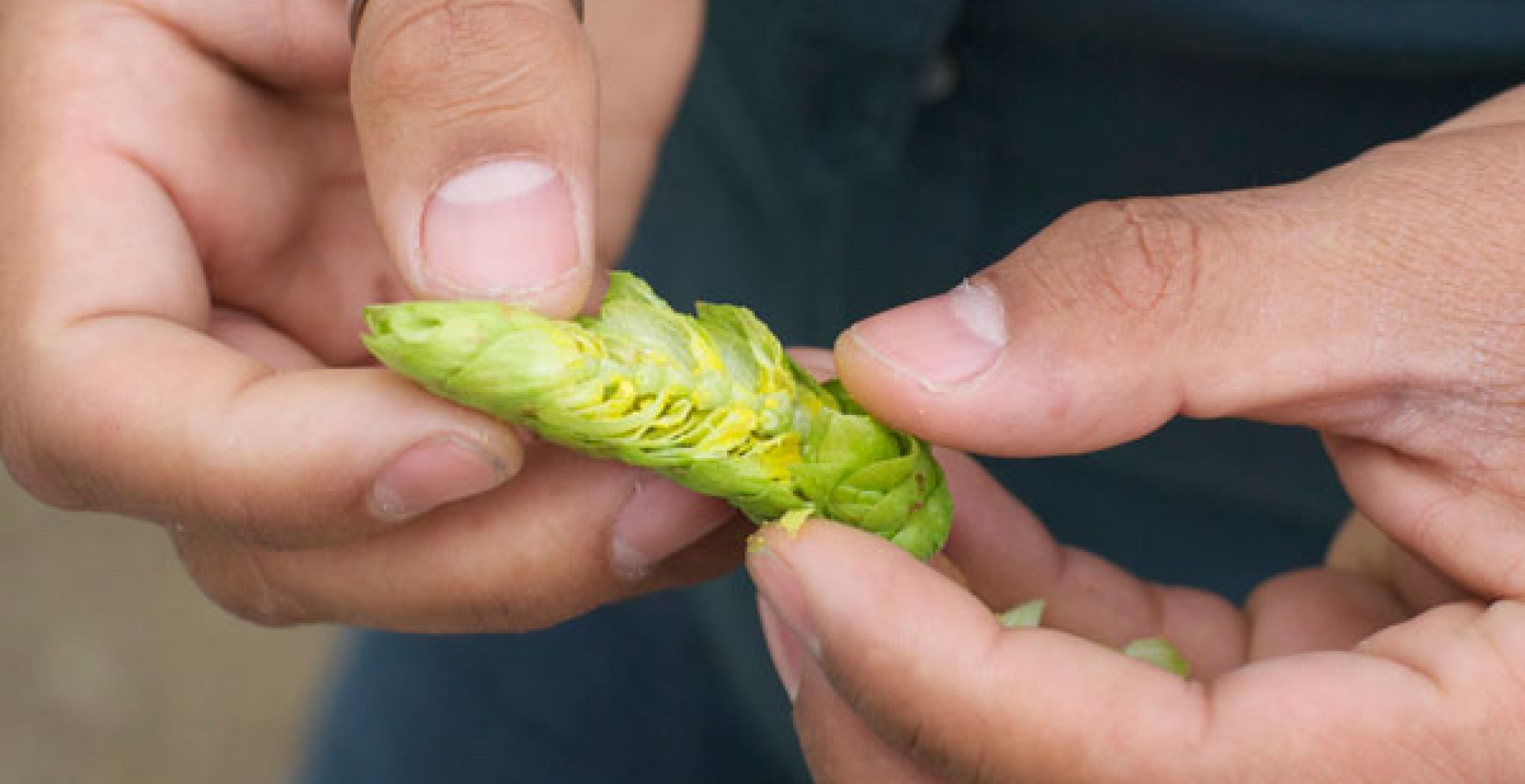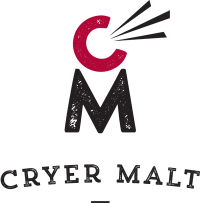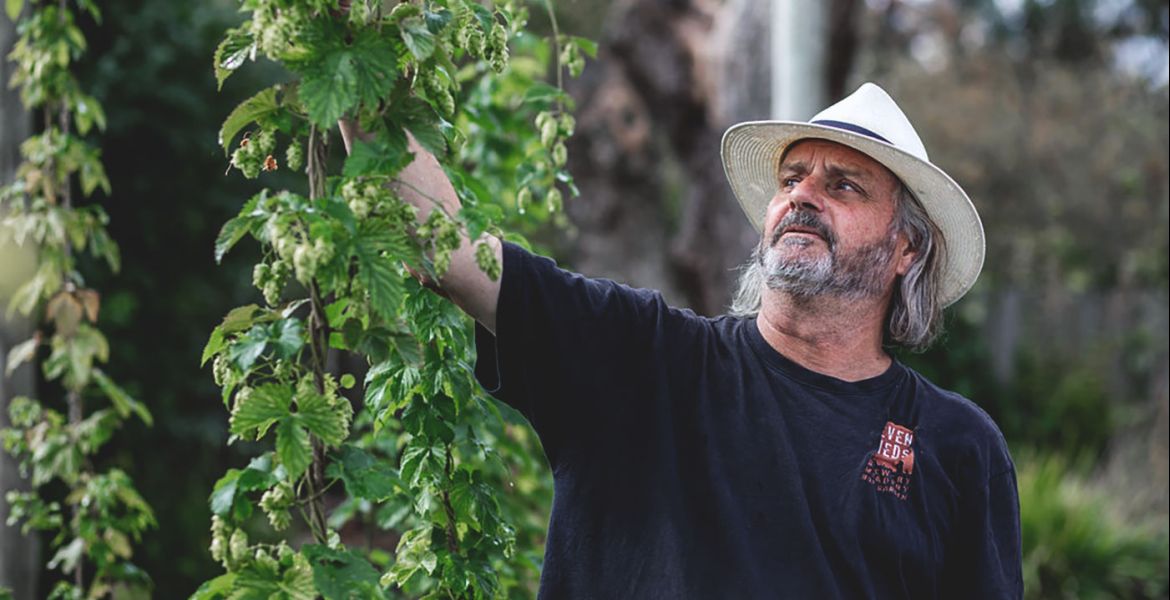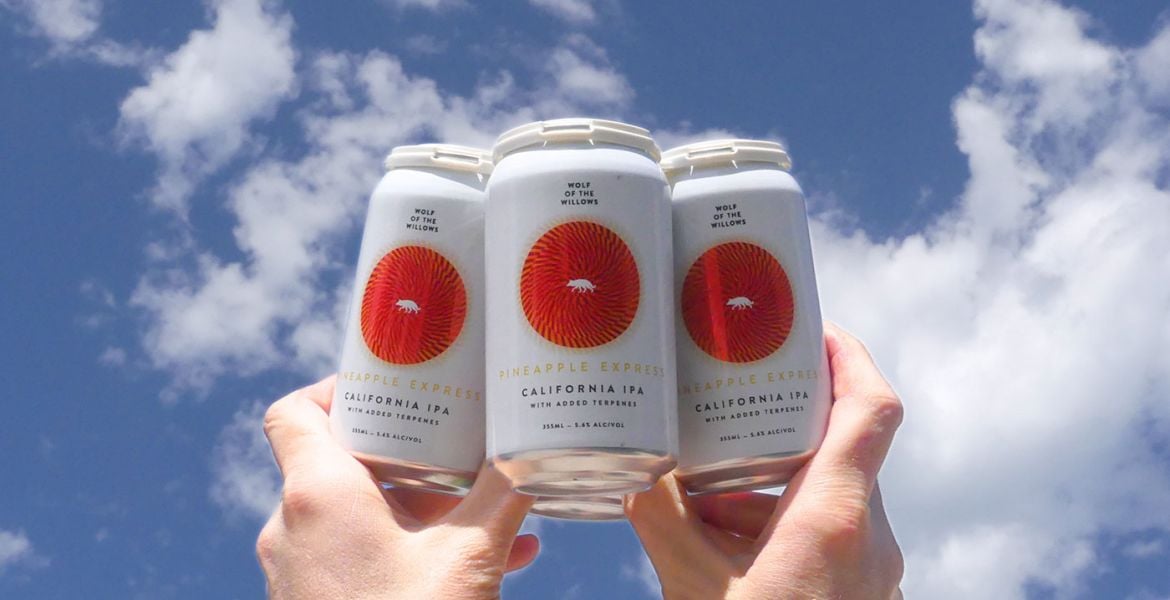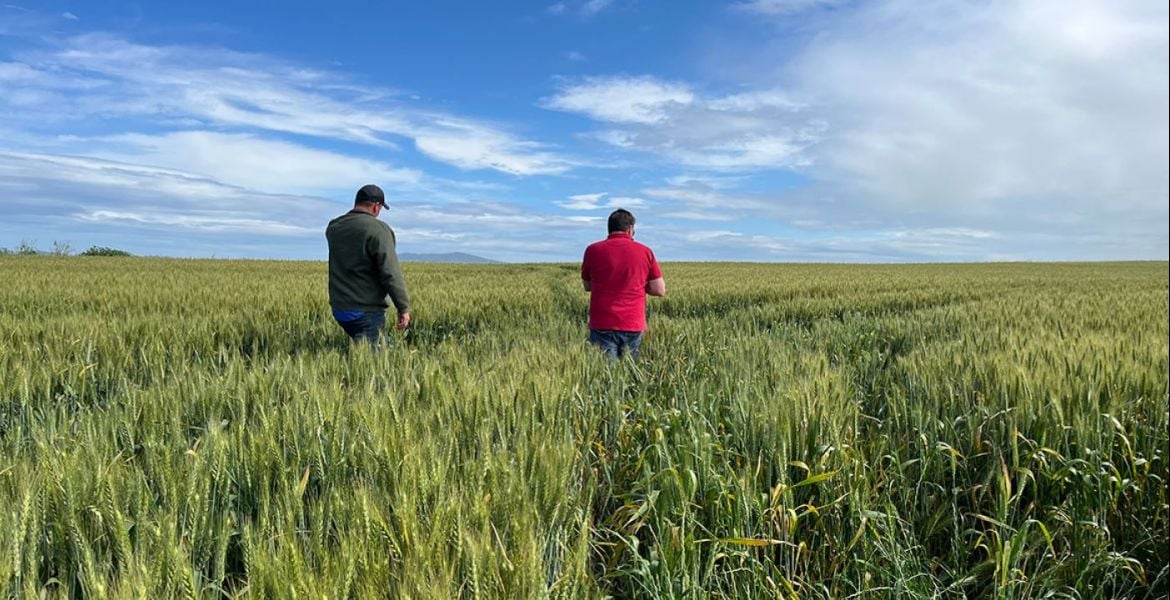Big brewer: bad; craft brewer: good. It's a hoary old perception and one to which no thoughtful beer drinker would give any credence. Just because beer brand X is ultimately owned by brewing giant Y, it doesn't necessarily follow that beer X will be bland and uninteresting.
Sometimes the big boys can be surprisingly nimble on their feet when it comes to, ahem, maintaining brand relevance. A case in point is Tasmania's iconic Cascade Brewery in Hobart (owned by brewing behemoth CUB, which is itself now part of the vast booze-geyser that is the SABMiller Group). In a heart-warming display of big-brewer innovation, Cascade's annual First Harvest Ale has been at the forefront of experimental hop use for 12 years and counting. It can even lay claim to having been Australia's first ever beer made with fresh, new season hops as opposed to dry ones.
It’s a milestone they claimed in part thanks to their geography. After all, it would be remiss of Cascade to do a quick eBay search for "fresh hops" on the morning of the brew day. Fortunately, Bushy Park is a picturesque, 50-minute drive from the brewery and there, within the folds of the fertile Derwent Valley, Hop Products Australia (HPA) has around 200 hectares of hops.
Humankind has been cultivating Humulus lupulus – hops to you and me – in order to flavour and preserve beer since at least the 8th century AD, so in 2013 it's not just a matter of throwing a few seeds onto the ground and hoping for the best. Since the early days, when hops were often grown close to the local brewery that used them, experts – like the hopheads at HPA – have stepped in and turned hop cultivation into a science.
Tim Lord, HPA managing director, explains that the Derwent Valley is ideal for growing hops. The valley floor has deep, rich soil and is subject to abundant rainfall. Of equal importance is the cold winter that perennial plants need in order to successfully flower the following season (a process known as vernalisation). Day length is another critical aspect of hop farming. The optimum areas for growing hops are around 40 degrees latitude and Bushy Park is right in the sweet spot at 42 degrees.
During our visit, darkly swollen clouds billow overhead as fat hop cones sway gently in the breeze. The air is sweet with the intoxicating aroma of fresh hops. Rakish readers who know what a jazz cigarette is would find a familiar pungency in the hoppy atmosphere for, as Tim confirms, the hop plant has a notorious first cousin in cannabis.
"They're actually very similar in structure and both have high levels of resins and essential oils… but for those curious characters who have strapped up some hop and smoked it… All I’ve ever heard is that it’s made them pretty crook. I wouldn’t recommend it!" he says.
Hop plants are climbers and in a commercial cultivation the growing hop bines (vines) are trained up strings that hang down from an overhead trellis. Here at Bushy Park Estates this equates to some one and a half million strings to be hand tied each spring! Come autumn, the female hop flowers (known as cones) are ready to be harvested, kiln-dried and pelletised.
Alongside their regular crop of 12 varieties, HPA conduct an experimental breeding program that has been running since the 1950s. It is this very program that produced the now world famous Galaxy hop that has been used to such great effect in Stone & Wood's Pacific Ale and Bridge Road's Galaxy IPA to name but two.
However, the program is a painstaking process and success stories are not written overnight. Each year, around 3,000 seedlings are planted and over the following six or seven years, these are evaluated and selected for their suitability as a commercial crop. When HPA feel they have a variety that is suitable for large-scale brewing, the brewers from Cascade enter the picture and a collaborative process of brewing evaluation takes place, one variety at a time.
Before any commercial volumes of beer are made with new hops, HPA conduct test brews. The initial test beer is a very pale lager, with low bitterness and minimum malt character, a blank canvas on which the hop character can be clearly evaluated. The hops are then tested with different malt grists as some hops show very different characters depending on what style of beer they’re used in.
According to Tim: "That's the most important step of the process. After the six years of work that we do, let’s face it, if it doesn't taste any good in beer then you go and find it, pull it out and try the next one."
As with many other harvest beers, Cascade use fresh "green" hops that sidestep the kilning process to go straight from the plant and into the brew kettle within a matter of hours. Using these fresh experimental hops has its pros and cons. On the downside, there's more work to be done, with sacks upon sacks of hop cones being added to the brew as opposed to a compact 20kg box of dry pellets. All this extra vegetative matter means that the beer takes a little longer to mature and results in a great deal more material dropping out to the bottom of the storage tanks.
However, the positives far outweigh the negatives. Cascade head brewer Mike Unsworth theorises that the extra tannins and polyphenols from the sheer bulk of vegetative matter can help to extend the shelf life of the beer. Also there are extra flavour and aroma compounds that make their way into the finished beer.
Tim elaborates: "Most hops have a high level of essential oils which are quite volatile substances so when the hop goes through the kilning process a lot of that is lost. One of the unique things about green hop beer is that you’re taking everything that’s in the hop cone and introducing that to the beer. This introduces hop driven character that you’re not going to get with kiln-dried hops."
Hop Development
As far as new hops on the way go, Tim remains tight-lipped as there are literally too many to mention.
"Our experimental hop gardens have several hundred potential new hop varieties and it's part of the process we've been going through with Cascade to figure out which ones might be the most interesting for future brewing applications."
As has already been mentioned, HPA have had massive success with their proprietary hop, Galaxy. I ask if there could be any more Galaxies in HPA's universe?
Tim continues: "Yes, we’ve got a new variety called Ella. We’re only growing a small quantity of it at the moment but we planted some pretty large areas this year. Whereas Galaxy is quite a fruity, with lots of citrus, peach, and passion fruit, Ella is a lot more floral and spicy and I think that makes a simply wonderful beer.
“Summer is another hop that we’ve been growing for a few years now but we’ve also expanded that. That’s a smaller hop but it imparts a very distinct apricot/stone fruit character to the beer which people are finding very pleasant.
“We also have Topaz and that’s more earthy with very subtle fruit like lychee and blackcurrant, not the big, punchy American style but a bit more subtle and people are finding that very nice so that’s going really well... We just presented a Topaz beer at a festival in Germany and it was picked as the best beer on show."
The booming craft beer scene has, of course, had an impact. At one stage HPA was very much focused on producing bittering hops for the large commercial breweries. At present HPA are in the midst of a change of tack and are moving away from what Tim describes as "the global commodity market of supplying hops just for alpha acid" and concentrating more and more on the flavourful, aromatic varieties that are so beloved of craft brewers. However, this isn't to say that this shift in priorities means a disconnection from the macro brewers.
For Tim, this just raises another pertinent issue: "You have to also consider the question, ‘What is craft (brewing)?’ as a lot of the bigger commercial brewers are looking for hops to differentiate there beer now rather than just focusing on 'How cheap can I buy the alpha acid?'"
The 2013 Cascade First Harvest
Cascade and HPA enjoy a symbiotic relationship; HPA are able to rely on Cascade's ongoing support in the development of new hops – and more importantly, they have a guaranteed customer for new varieties and the opportunity to see how the resulting beer fares on the market. Cascade benefit by having exclusive use of the never-before-used hop varieties that make their First Harvest Ale such a unique beer, at least in macro-brewing circles.
Each year, Cascade select three new hop varieties from HPA's experimental garden (which, although sounding like some alfresco San Franciscan acid test, is actually a place of scientific plant breeding) to use in their limited release brew. This year's hops, named after local mountains, are:
- Wellington: a promising new bittering hop, to be added at the start of the boil.
- Belmont: a flavor hop, to be added in the second half of the boil. Belmont has a pleasant and earthy mouth-filling character. It is designed to fill out the profile of the beer and provide some mouthfeel and weight.
- Field: aroma, a dual-purpose hop with high bittering potential as well as bags of aroma. Will be used in the final 10 minutes of the boil to provide lots of fruit, blackcurrant/blackberry and citrus aroma.
Each vintage of the First Harvest Ale has the same ABV (5.5 percent) and essentially the same grist of local Tasmanian pale malt (using first harvest barley) and Australian crystal malt for added colour and character. This consistency allows each year's new hops to firmly stamp their mark on the beer.
A tasting of vintages 2009 through to 2012 led by Cascade head brewer Mike Unsworth showed a wide range of hop flavours, with the peppery spice of 2010 and the sweet marzipan and orange peel of 2011 standing out. In general, age will soften the hop character of a beer. This mellowing enabled the 2009 vintage to show a particularly luscious and chewy malt profile brimming with caramel and toffee. Evidently, First Harvest Ale can be confidently cellared for a number of years.
Though the vital statistics of the beer have remained fairly constant over the years, the Cascade team will tweak the hopping from time to time. Indeed, the craft beer scene has exerted its influence over their First Harvest Ale. As Mike explains: "As [drinkers'] palates change, we can push the envelope a bit more regarding bitterness, flavour and aroma, so in a way current beer trends do influence First Harvest."
He predicts that this hop blend will provide the 2013 release with "leafy, herbal and fruity aromas overlaying a tropical fruit salad finish." He also revealed that 2013's release will have an extra point of difference as they plan on swapping the yeast from a straight ale strain to Cascade's unique 100-year-old house strain.
Cascade are not a crafty micro by any stretch of the imagination. You only have to see the huge 600 hectolitre fermenters to know that this is big brewing with all the bells and whistles. Despite all this, Mike is keen to stress that, although owned by a giant corporation, Cascade still operates like a traditional hands-on brewery, and he paints a charming picture of grizzled old rusted-on Cascade brewers "twiddling a few knobs" without any computer control.
"It's their brewery really,“ he says. "I'm just helping them along a little bit."
Chris Brady travelled to Tasmania for the hop harvest as a guest of Cascade.

